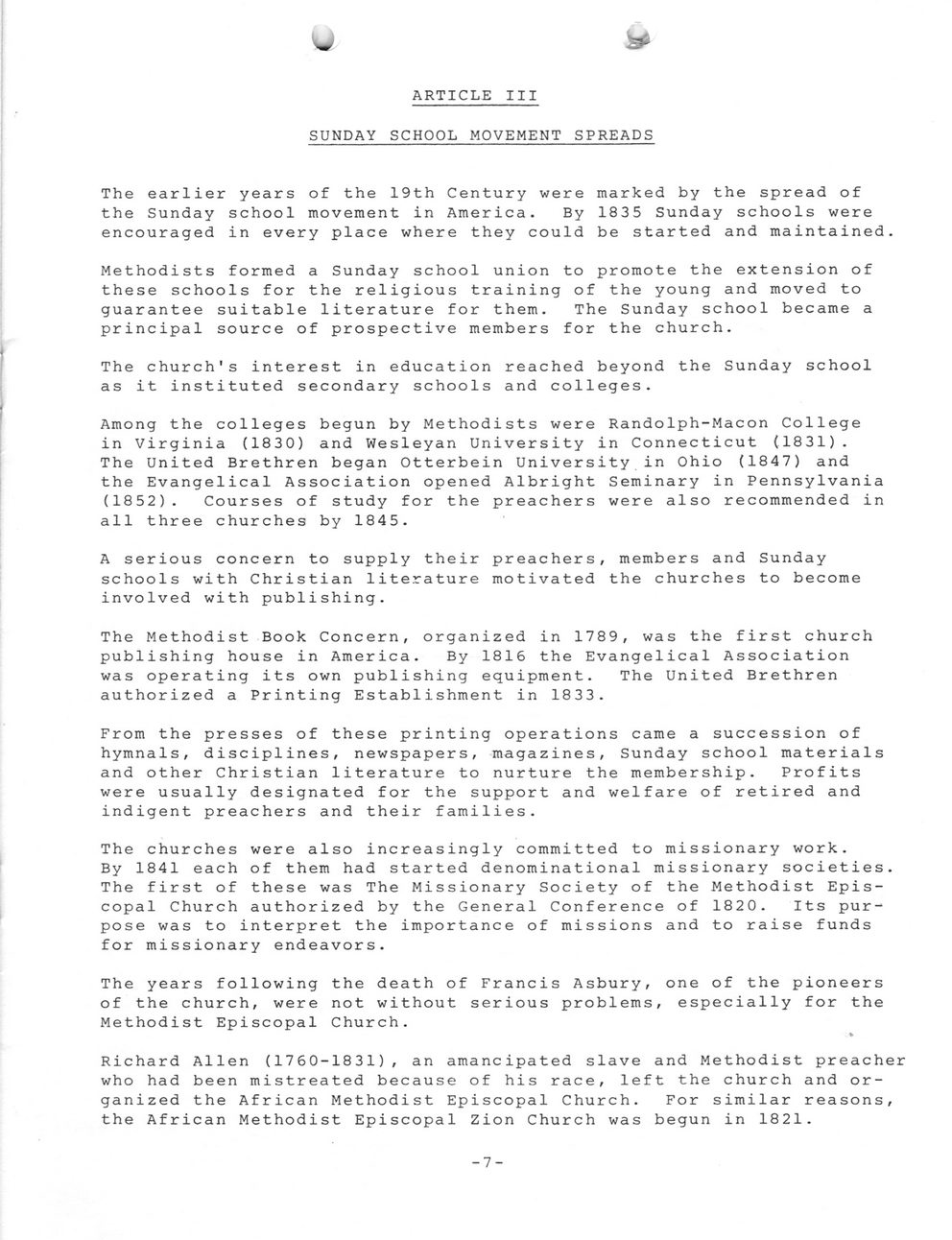This text was obtained via automated optical character recognition.
It has not been edited and may therefore contain several errors.
ARTICLE III SUNDAY SCHOOL MOVEMENT SPREADS The earlier years of the 19th Century were marked by the spread of the Sunday school movement in America. By 1835 Sunday schools were encouraged in every place where they could be started and maintained. Methodists formed a Sunday school union to promote the extension of these schools for the religious training of the young and moved to guarantee suitable literature for them. The Sunday school became a principal source of prospective members for the church. The church's interest in education reached beyond the Sunday school as it instituted secondary schools and colleges. Among the colleges begun by Methodists were Randolph-Macon College in Virginia (1830) and Wesleyan University in Connecticut (1831). The United Brethren began Otterbein University in Ohio (1847) and the Evangelical Association opened Albright Seminary in Pennsylvania (1852). Courses of study for the preachers were also recommended in all three churches by 1845. A serious concern to supply their preachers, members and Sunday schools with Christian literature motivated the churches to become involved with publishing. The Methodist Book Concern, organized in 1789, was the first church publishing house in America. By 1816 the Evangelical Association was operating its own publishing equipment. The United Brethren authorized a Printing Establishment in 1833. From the presses of these printing operations came a succession of hymnals, disciplines, newspapers, magazines, Sunday school materials and other Christian literature to nurture the membership. Profits were usually designated for the support and welfare of retired and indigent preachers and their families. The churches were also increasingly committed to missionary work. By 1841 each of them had started denominational missionary societies. The first of these was The Missionary Society of the Methodist Episcopal Church authorized by the General Conference of 1820. Its purpose was to interpret the importance of missions and to raise funds for missionary endeavors. The years following the death of Francis Asbury, one of the pioneers of the church, were not without serious problems, especially for the Methodist Episcopal Church. » Richard Allen (1760-1831), an amancipated slave and Methodist preacher who had been mistreated because of his race, left the church and organized the African Methodist Episcopal Church. For similar reasons, the African Methodist Episcopal Zion Church was begun in 1821. -7-

Main Street Methodist Church Document (019)